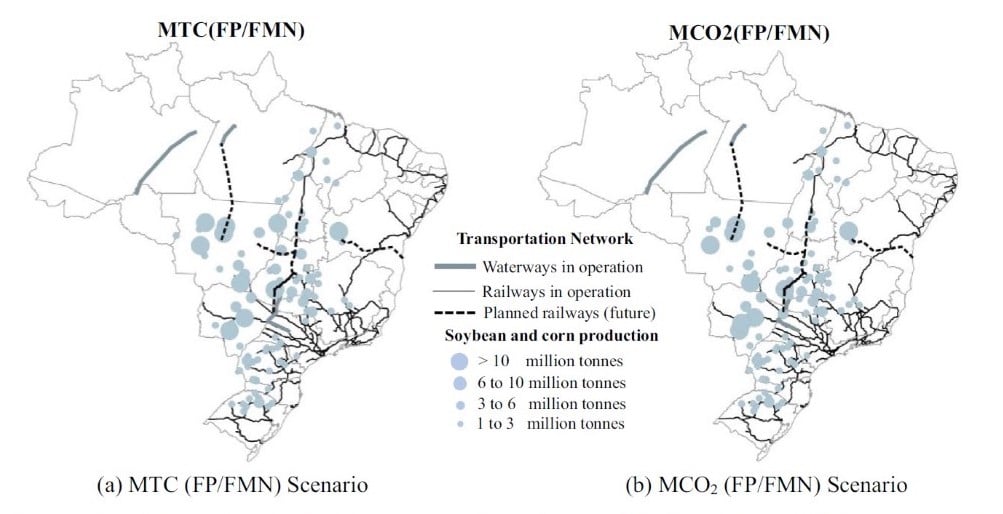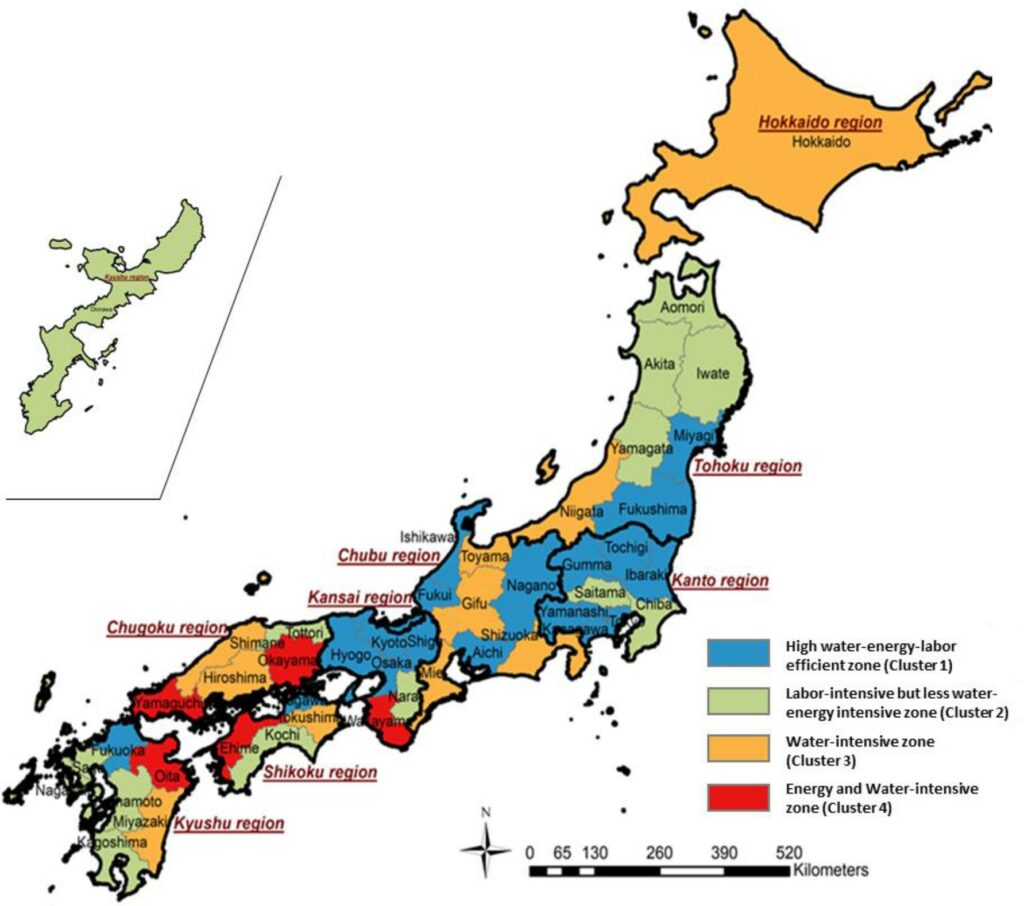Join JPI UE
Faq
FAQ
Please click here for the frequently asked questions we collected.
If you have an additional questions you are welcome to mail us at info@jpi-urbaneurope.eu
A city and a human body have many similarities: they are complex systems with intricate food, water and energy needs. Simply put, both have metabolic systems, linked with regulating resilience and overall health. The METABOLIC project financed in the joint JPI Urban Europe and Belmont forum call ERA NET Cofund SUGI FWE Nexus offers decision-makers key insights on how they can ensure their cities keep their metabolisms healthy. Professor José Caixeta, Professor Fi-John Chang, and Professor Makoto Taniguchi (three of the project’s researchers) share project’s outputs in Brazil, Japan and Taiwan. Each country team tackled a different metabolic issue. In Brazil, an analysis centred on how Green Transport Corridors has offered important insights on food security. In Taiwan, the joint management of hydropower and small-scale solar farms has been shown to be a viable way of tackling water and energy security. In Japan, the project demonstrates that historic cities can overcome traditional legislation to ensure metabolic efficiency and sustainability. In this article José, Fi-John and Makoto go into more detail about each national team’s outputs.
A key output of the project’s work in Brazil is a set of recommendations for Green Transport Corridors that would cut 37% of the carbon dioxide emissions associated with freight transportation by 2025. Green Transport Corridors (GTCs) are freight transportation infrastructure, designed to be environmentally friendly and connected to economically relevant areas. This work tackles the metabolic issue of food security whilst addressing broader environmental aims. The Brazilian research team adopted a nexus approach to its analysis of GTCs: a nexus approach is one where food, water and energy are seen as interrelated systems. This approach was highly effective, evidenced by METABOLIC’s policy recommendations, which, if adopted, would increase Brazil’s general food security by connecting food transport routes with key economic hubs and decrease national carbon dioxide emissions by forty-one million tonnes per year.

The project’s work has also led to the development of a highly innovative Logistics Composite Index for determining which GTC options are the most efficient and eco-friendly. The index involves a two-step process: first, a Network Equilibrium Model is created for showing the shortest and most efficient options for transporting a commodity. However, environmentally speaking, the shortest options are not always the best ones. So, to account for these concerns, the second step uses a multicriteria performance measurement, called Data Envelopment Analysis, to evaluate scenarios with an environmental lens. This index offers non-specialist policy makers a straightforward way to find optimal solutions that balance efficiency with environmental protection.
Considering the importance of Brazil’s ecosystems, the lasting impacts of this work could have a global dimension.
José says that in the long-term the project will show which regions within Brazil are most suitable for expanding soybean and corn production so that supply matches the demand expected in 2050, whilst minimally straining energy and water systems. METABOLIC’s work in Brazil provides the nation with a roadmap for the best possible network of Green Transport Corridors. Considering the importance of Brazil’s ecosystems, the lasting impacts of this work could have a global dimension.
In Taiwan, the project has provided policy makers with feasible strategies for optimising water management and deploying small-scale hydropower systems. The project has done this by creating a model for the Taipei metropolitan area that compares an optimised multi-objective approach with a non-optimised approach to water management, hydroelectric power, and photovoltaic systems (floating solar farms). Results show that an optimised approach improves water storage by 13%, food production by 13.3% and energy output by 15.1%. Since the work took place in the Tamsui watershed, its outcomes are relevant to over eight million people, representing between 25-30% of Taiwan’s entire population. The project’s modelling work on floating solar farms is particularly useful for policy makers that are seeking viable renewable energy systems in land-scarce settings. Careful analysis of existing irrigation ponds in the watershed around Taipei showed these ponds could fulfil their agricultural functions and double as spaces for small-scale floating solar farms. The results show that if 740 irrigation ponds are fitted with floating solar farms, the system could generate 992 megawatts, producing between $66.3 million and $74.8 million worth of electricity on a yearly basis. Additionally, jointly operating these floating solar farms with the hydropower system of the Shihmen reservoir could improve energy output worth up to $91 million a year.

In terms of water security, METABOLIC has shown optimisation of the Shihmen reservoir’s water storage and water supply would decrease the threat of water shortages harmful to public health and agriculture. The complementary operation of the Shihmen reservoir with the floating solar farm system would create an annual water storage to capacity ratio that would go up to 52%, representing a 13% increase over a non-optimised scenario. FI-John adds, “this study has opened my eyes because I used to focus on the water issue, but now I realise these three things are interconnected in very complex ways, so we have provided a tool for solving a complex metabolic problem involving water and energy.”
I used to focus on the water issue but now we have provided a tool for solving a complex metabolic problem involving water and energy.
In Japan, one thing the project has done is inform policy direction on sustainably transitioning the food, water, and energy systems within historical cities. Makoto defines historical cities as, “cities with a long history of human habitation with long-standing legislation based on tradition.” Many of these cities cannot implement renewable technologies either because of traditional legislation or for commercial or technical reasons. In Kyoto, there are both commercial and legislative obstacles to the widespread use of solar panel technology: the city’s strict landscape regulation and its sizeable tourism industry restrict the scope for solar panel installation since the widespread use of this technology would change the historical character of the city’s buildings. Nevertheless, Kyoto’s policymakers are still determined to achieve a green transition.
In its efforts to assist, the project has produced a nexus model, providing Kyoto with sustainable pathways that work around the limitations faced by a historical city. The model has already identified synergetic efficiencies between the city’s wastewater management system and electricity demand. It shows the city’s integration policy for wastewater management has created an 8% decrease in energy demand. This finding is important as policy makers were initially unaware of this effect since the policy was initially prompted by population decline and a desire to scale down urban systems to match demographic reality. Makoto clarifies that informing policy makers which services have the best food-water-energy synergies, allows them to make better decisions on which systems should be retained so that urban metabolic efficiency is increased whilst protecting national heritage as well as the environment.
Another key result was a structurally meaningful nexus classification system for the whole of Japan. All forty-seven of the country’s prefectures were identified and categorised by their industrial water, energy and labour efficiencies. Using this system, project analysis shows intensely increasing economic growth in highly-efficiency zones could save the country 327 Mm3 of freshwater and produce 184 PJ of energy, annually. Makoto finishes by saying, “our work shows which cities are more or less sustainable in terms of energy, water and economy, we have made a road map for the whole of Japan.”

Our work shows which cities are more or less sustainable in terms of energy, water and economy, we have made a road map for the whole of Japan.
At the end of the discussion José, Fi-John, and Makoto say a key obstacle to their work was the Co-vid 19 pandemic. They all agree that the pandemic also showed them that they could deploy nexus thinking in very different contexts to tackle urban metabolic health. If a city really is like a human body, then it is worth remembering no two human beings have the exact same metabolism, which is why the diverse issues tackled within the project will come together in a broadly applicable toolkit that can address common problems cities face in the 21st century whilst accounting for their individual metabolic differences. Fi-John says what they have discussed today represents only a small part of what the project has achieved as there are over thirty different academic papers alone. Yet, academia is not the only beneficiary of the project’s work. All three researchers agree that their work is providing decision-makers with key policy information and tools to make the urban centres of tomorrow.